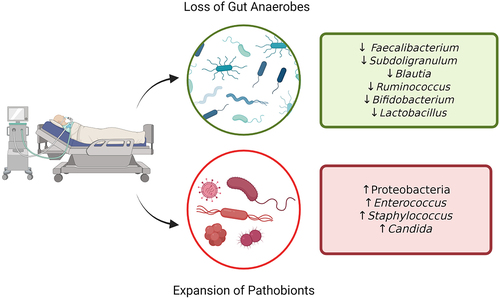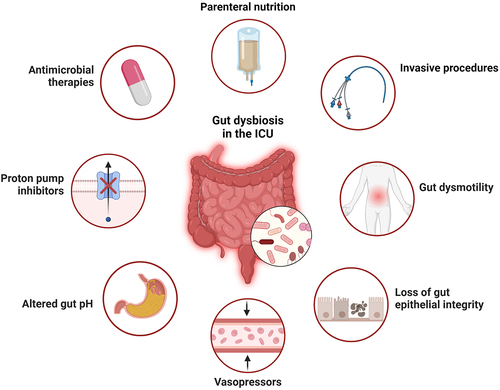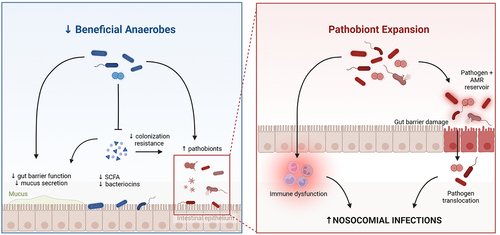Figures & data
Figure 1. Gut microbiota dysbiosis in critical illness. Hallmark features of ICU gut dysbiosis include reduction of community alpha diversity, associated with the loss of commensal anaerobes, and expansion of pathobionts. Created in BioRender.com.

Figure 2. Factors contributing to dysbiosis in critical illness. Multiple factors contribute to the significant shifts observed in microbial ecology of the gut during critical illness, including host intrinsic factors (circulatory shock, systemic acidosis, altered mucosal blood flow, inflammation, and others), as well as host extrinsic influences (antibiotics, nutritional alterations, medications, invasive devices, and others). Created in BioRender.com.

Figure 3. Mechanisms linking gut microbiota dysbiosis with hospital-acquired (nosocomial) infections in critical illness. The loss of commensal anaerobes contributes to breakdown of gut barrier integrity, as well as impaired colonization resistance against pathobiont taxa. Expansion of pathobionts (eg. Enterobacteriaceae), coupled with impaired epithelial barrier integrity and systemic immune dysfunction, enables the development of invasive infections by both gut pathobionts (through translocation and dissemination) as well as other pathogens due to impaired systemic immune defense. Created in BioRender.com.

Data availability statement
This review article does not present any new data.
